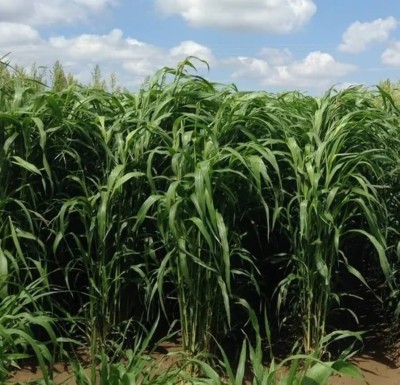BSARKAR Sudan grass seed, Grass seed Seed(100 per packet)
Quick Overview
Product Price Comparison
Certainly! Here's a detailed description of Sudan grass:**Sudan Grass Description:****Purpose**: Sudan grass (Sorghum sudanense) is primarily cultivated for forage and hay production, making it a valuable crop for livestock feed.**Appearance**:- **Height**: Sudan grass typically grows between 3 to 8 feet tall, depending on soil fertility and growing conditions.- **Color**: It has green to reddish-green foliage, which turns golden brown when mature.- **Texture**: The leaves are long, narrow, and blade-like, giving the plant a coarse texture.- **Growth Pattern**: Sudan grass grows in dense clumps with upright stems that can vary in thickness.**Habitat**:- Sudan grass thrives in warm climates and is well-adapted to areas with hot summers and adequate rainfall.- It prefers well-drained soils but can tolerate some drought conditions once established.**Climate Preferences**:- Sudan grass is a warm-season annual grass, meaning it grows best during the warmer months of the year.- It is commonly grown in regions with temperatures ranging from 70┬░F to 95┬░F (21┬░C to 35┬░C).**Uses**:- **Forage**: Sudan grass is primarily used as a forage crop for grazing or hay production. It has high nutritional value and is palatable to livestock such as cattle, sheep, and goats.- **Soil Improvement**: Due to its extensive root system and fast growth, Sudan grass is also used for erosion control and soil improvement, particularly in areas prone to erosion.**Maintenance**:- Sudan grass requires well-drained soil and regular moisture during its growth phase.- It is typically planted in the spring or early summer and can be harvested multiple times throughout the growing season, depending on the intended use (grazing or hay).**Disease Resistance**:- Sudan grass is generally resistant to many pests and diseases; however, it can be susceptible to aphids, stem borers, and fungal diseases under certain conditions.**Environmental Impact**:- Sudan grass can contribute to soil conservation due to its extensive root system, which helps prevent erosion.- It efficiently utilizes water and nutrients, making it a sustainable choice for forage production in agricultural systems.**Conclusion**:Sudan grass is a versatile warm-season annual grass that is valued for its high productivity, nutritional quality, and ability to thrive in diverse climates. Whether used for livestock feed or soil conservation, Sudan grass is an important crop in agricultural and environmental management practices.


